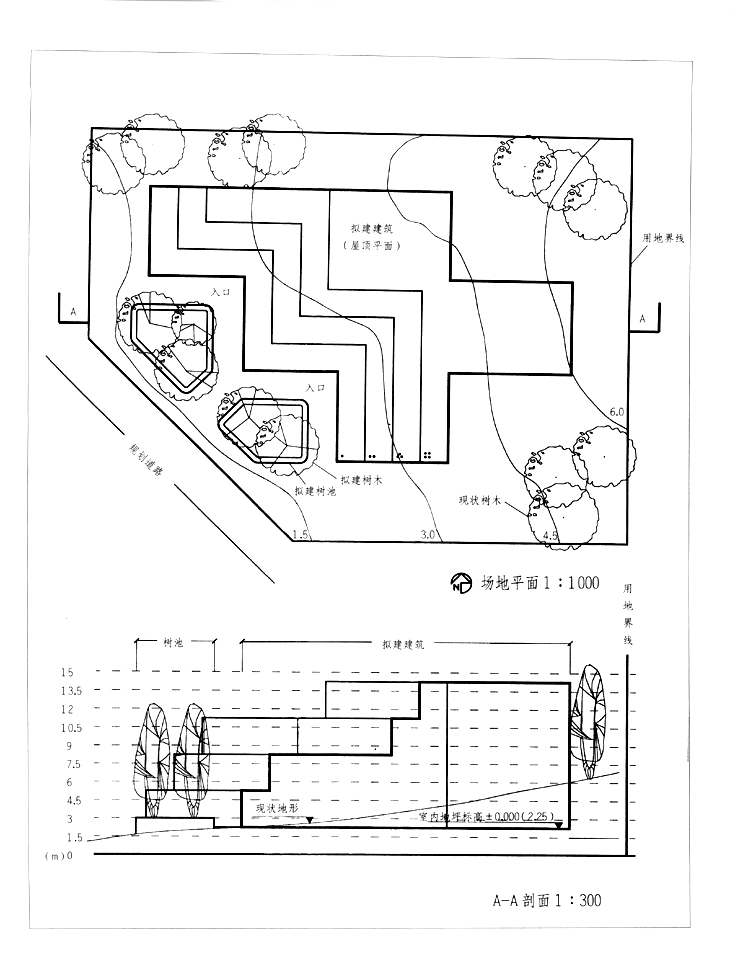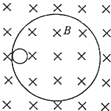问题
问答题
根据所给底图上的网线,绘制并扼要说明场地内现状条件和拟建项目的A-A剖面(水平比例为1:1000,垂直比例为1:300)。
答案
参考答案:

解析:
1.将平面空间转化为剖面空间,并作图表达。
2.变比例示图,即同一图中水平方向比例与垂直方向比例有所不同。这种情况在水平长度与垂直高度差异较大时经常出现。
3.根据场地条件及给定的条件与要求,确定建筑的±0.000标高。
[作图提示]
1.从分析场地现状着手。
2.在确定水平及垂直比例之后,通过定位,连线绘制A-A剖面场地地表线。a.作每条等高线在A-A剖面上的水平间距(比例为1:1000)和标高(比例为1:300)的垂线的相交点。b.将所作的各条等高线在A-A剖面上的垂线相交点折线连接构成A-A剖面的场地地表线。c.用平滑曲线将各点连接起来,形成现状地形剖面。
3.根据平面条件绘制拟建办公楼的剖面(同第2步一样,也应注意水平与垂直比例的变化,建筑看起来在垂直方向上有被拉伸之感)。
4.根据给定的建筑高度限制和场地现状,确定合理±0.000标高;然后将拟建办公楼在剖面图上定位。
5.绘出现状及拟植树木的可见部分。

 +
+ →
→
 →
→ +
+
 +
+ →
→
 →
→ +
+
